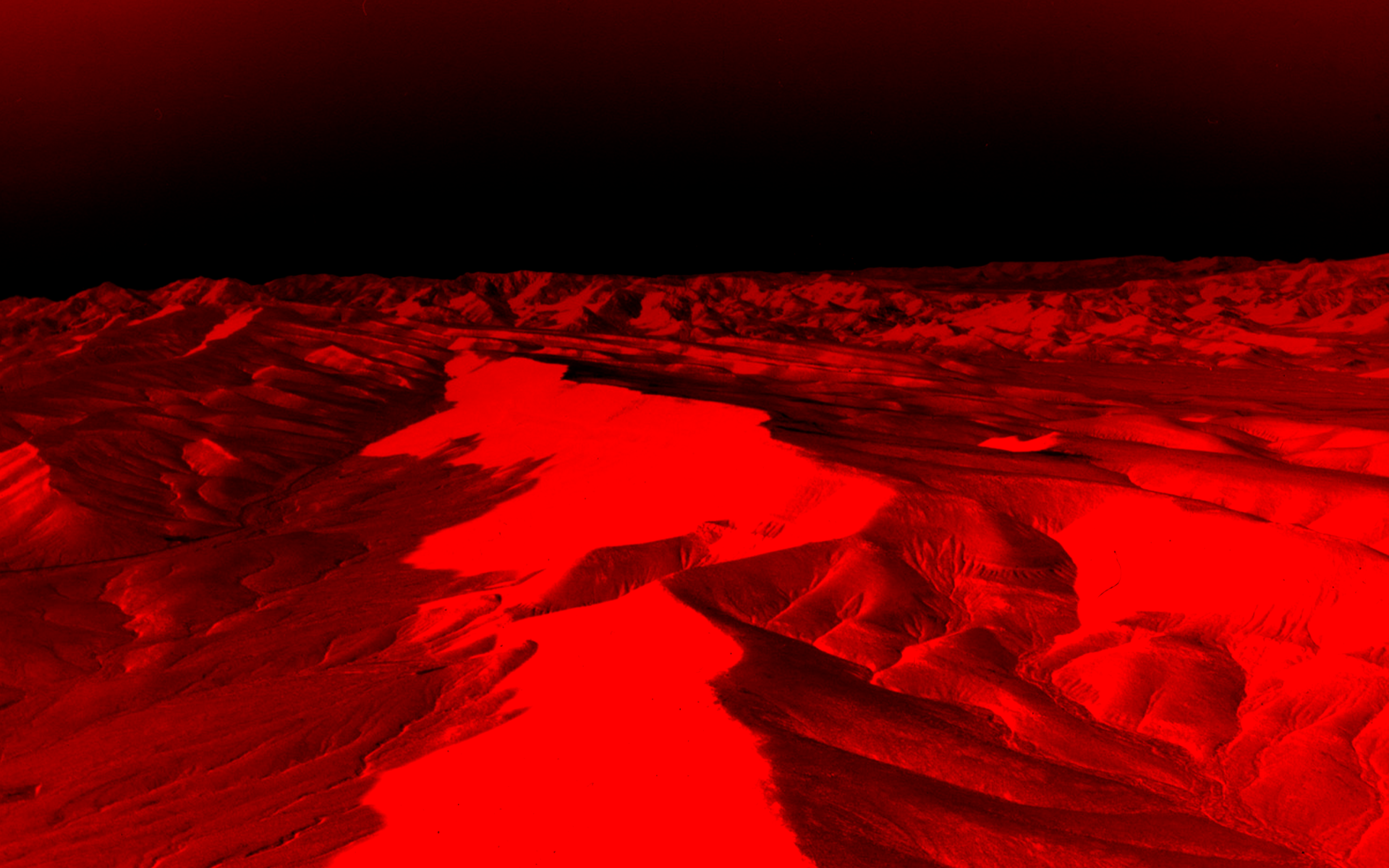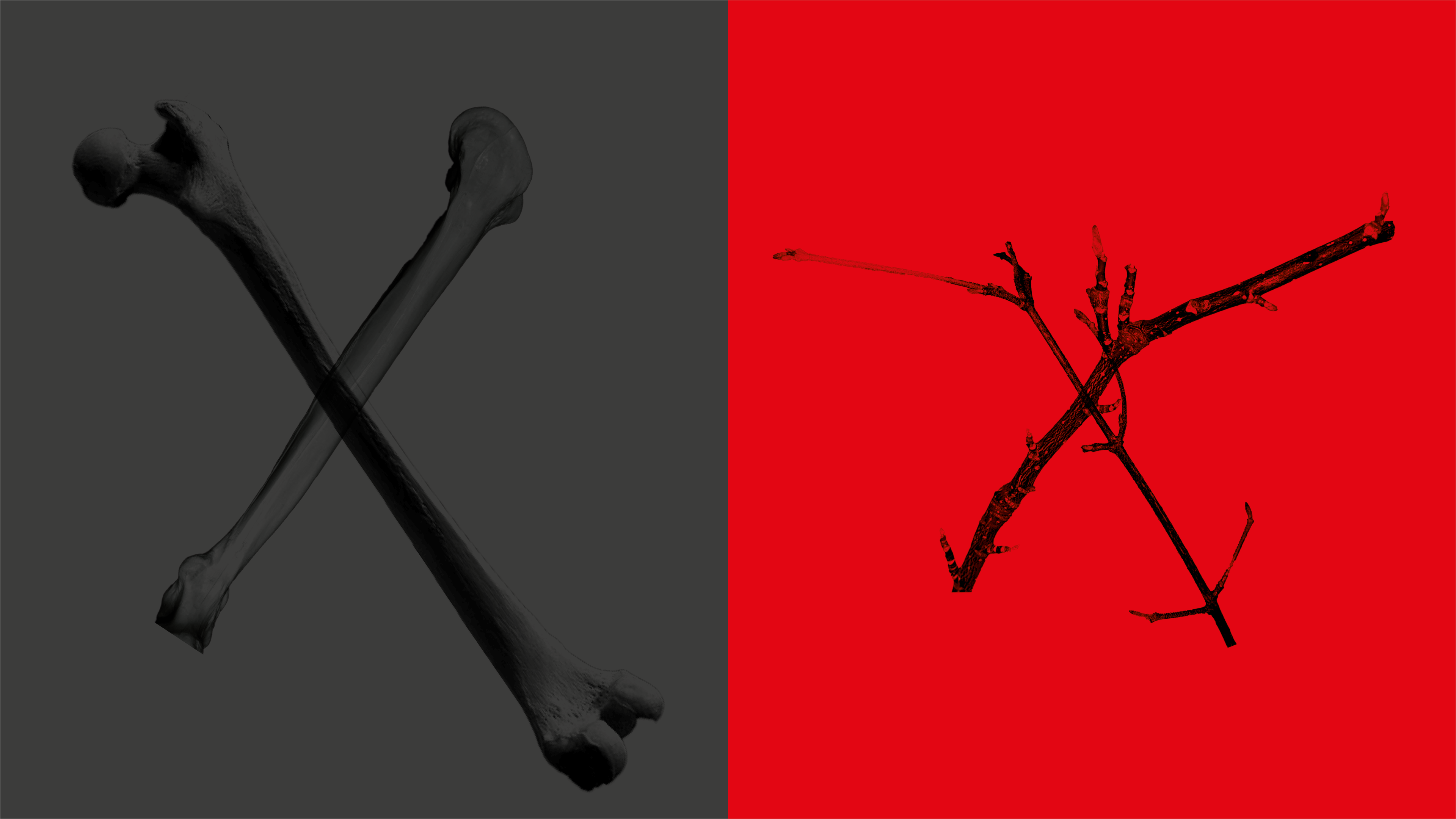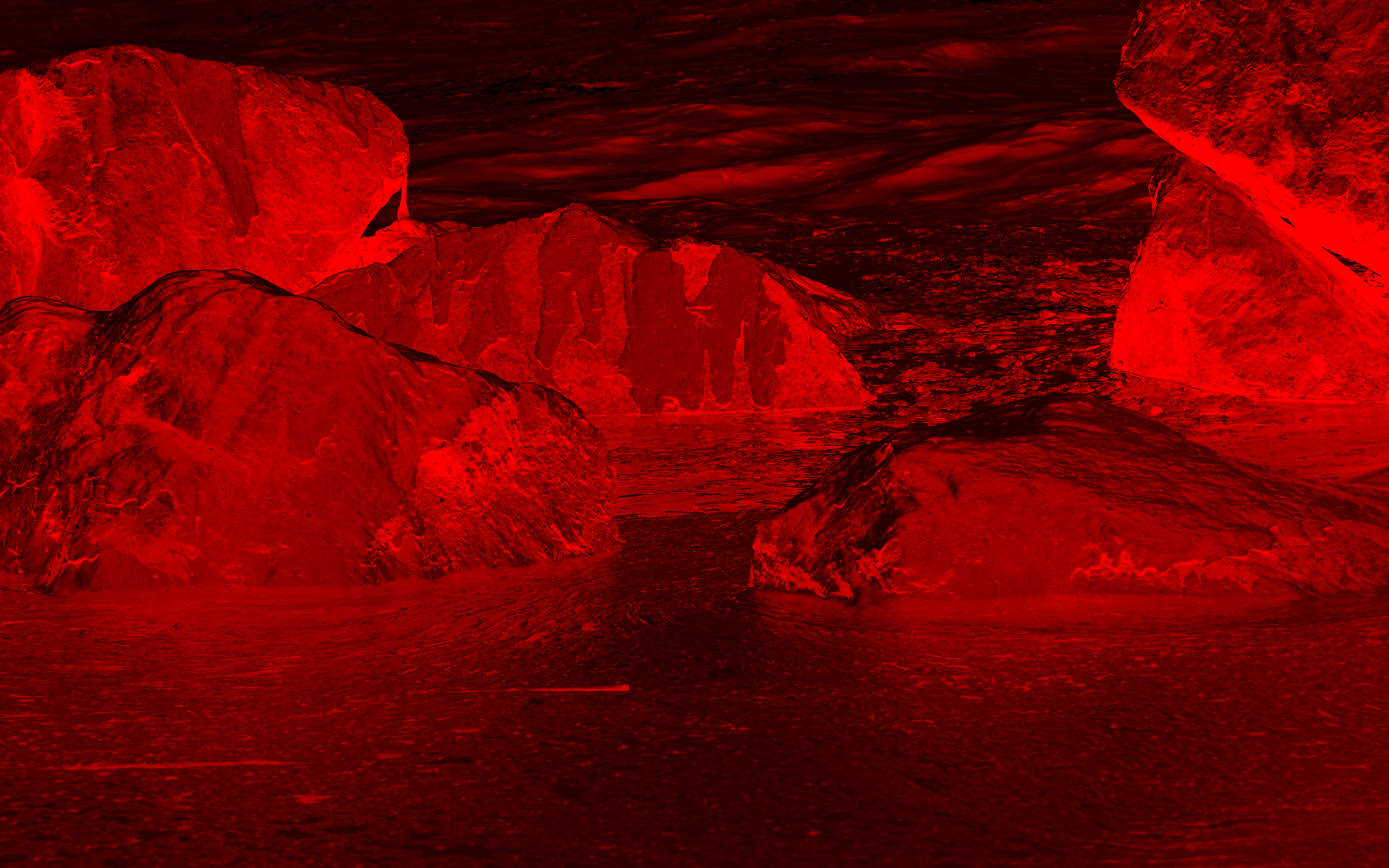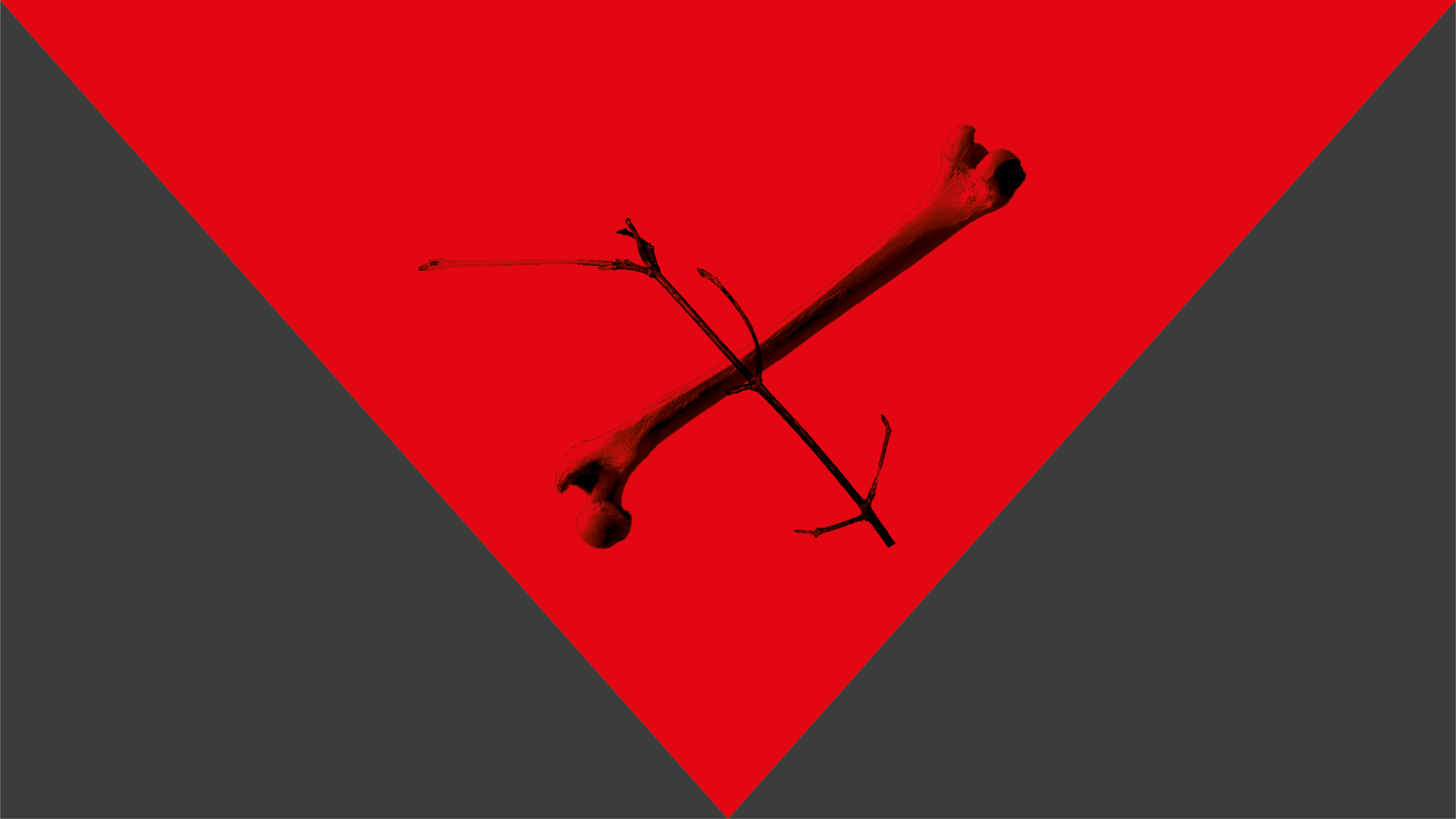
If nuclear weapons once cast their mushroom-shaped shadow over the experience of everyday life, then today, whether through normalisation or through a genuine lack of danger, the so-called ‘Atomic Age’ is generally spoken of in the past tense. In the popular imagination, the existential threat posed by ‘the bomb’ is such a thing of the past that it can now be recuperated as an artefact of historical or genre kitsch. Think, for example, of the 1950s setting of Indiana Jones and the Crystal Skull, where a nuclear test site is just an opportunity to establish some cute period detail — via the eerie domestic interiors of a model town, built to be blown up — and as a trigger for one of many thrilling set-pieces, when Harrison Ford survives the bomb by hiding in a lead-lined fridge.
But if a once-widespread anxiety about radioactive material is no longer persistent, then the materials themselves are. The half-life of neptunium-237, one of the toxic contents of spent nuclear fuel, is 2.14 million years. For uranium-235, this figure is 4.46 billion. These facts plunges us into the head-spinning zone of ‘deep time’, a chronological scale so much vaster than human timelines that we can barely imagine it. For as long as we are still producing these materials, the waste products of nuclear fission, then we face an uncertain risk of catastrophe — perhaps less to do with detonation than with storage.
There are only a few places in the world able to contain this material, where it is buried deep in the earth. Twenty-two nuclear repositories have been tried, ever. Five have been closed or were never built in the first place. Twelve are under construction, on hold, or still in the early stages of planning. Only five actually operate today. As these figures suggest, designing a nuclear repository is surely one of the most complex, difficult and high-stakes processes one can be involved in. But among the various issues involved — chemical, biological, geological, logistical, bureaucratic, political — is another, perhaps less obvious, but equally urgent challenge: one of communications design. If this material will remain toxic for millions or billions of years into the future, how can future generations be warned not to dig it up?

The oldest poem in the English language is often cited as ‘Cædmon’s Hymn’, named after the illiterate farmer who supposedly composed it after being miraculously given the ability to sing by God. It looks like this:
Nū scylun hergan hefaenrīcaes Uard,
metudæs maecti end his mōdgidanc,
uerc Uuldurfadur, suē hē uundra gihuaes,
ēci dryctin ōr āstelidæ
hē ǣrist scōp aelda barnum
heben til hrōfe, hāleg scepen.
Thā middungeard moncynnæs Uard,
eci Dryctin, æfter tīadæ
fīrum foldu, Frēa allmectig
[Translation: ‘Now [we] shall honour / heaven-kingdom's Ward,
the measurer's might / and his mind-plans,
the work of the Glory-father / as he of each wonder,
eternal lord, / the origin established;
he first created / for the children of men
heaven for a roof, / holy shaper.
Then Middle-earth / mankind's Ward,
eternal Lord, / after created,
the lands for men, / Lord almighty.’]
To any contemporary English speaker, this is incomprehensible; it has taken generations of research and scholarship to allow us to even translate it. The poem is about 1350 years old. Meanwhile the earliest known writing system, cuneiform, is significantly older, originating perhaps five and a half thousand years ago. A series of distinctive curved etchings, it again bears no resemblance to anything we would recognise as writing today. To this day, there are ancient writing systems we haven’t been able to decipher: the Voynich Manuscript, Linear A, Rongorongo. The communications systems of previous civilisations couldn’t survive millennia, let alone deep time. It would be a mistake, surely, to think that our own systems will avoid this fate. Perhaps this is especially true with the rapid advance of new technologies and types of consciousness, both human and non-human; and at a time when every new form of communication, especially online, seems designed for atrophied attention spans and memories, designed to be more and more ephemeral.
So how can we create warning messages for nuclear repositories by designing for deep time? In the late 1970s and early 1980s, the US Department of Energy formed the sinisterly-named Human Interference Task Force to deal with exactly this problem by creating a ‘marker system’ deterring anyone from accessing their repository — at the time the disastrous Yucca Mountain Project, eventually abandoned before completion and replaced by the Waste Isolation Pilot Plant in New Mexico. In doing they so inaugurated the nebulous, haunted field of ‘nuclear semiotics’. (‘Semiotics’ refers to the study of signs; as Robert Macfarlane points out, the Greek word from which it derives, sema, can mean not only ‘sign’ but also ‘grave’.)
The panel convened to research answers to the problem of nuclear semiotics encompassed a huge range of occupations and specialisms: nuclear physicists, engineers, architects, behavioural scientists, linguists; but also artists, graphic designers, librarians, ethicists, anthropologists, astronomers, historians, science fiction novelists. Perhaps predictably, their solutions varied in attitude and imagination. The writer Stanislaw Lem proposed launching satellites to constantly broadcast information about the repository to Earth, so that it could never be forgotten. Another panel member suggested that they create an artificial second moon to be launched into space, bearing a huge, permanently visible warning message. The author Françoise Bastide and semiotician Paolo Fabbri had the idea of genetically altering cats to glow whenever they were near radioactive substances.
Perhaps the most radical idea came from the academic Thomas Sebeok, who produced a report advising the creation of a new folk tradition or nuclear mythology: “information [could] be launched and artificially passed on into the short-term and long-term future with the supplementary aid of folkloristic devices, in particular a combination of an artificially created and nurtured ritual-and-legend.” This “accumulated superstition” would lead future populations to avoid areas containing nuclear waste. Modelled on the Catholic Church, which has successfully preserved key texts and narratives for almost 2000 years, this quasi-religion would have its own “atomic priesthood”, to whom the actual truth of the nuclear waste sites would be exclusively entrusted. Sebeok’s brilliant, insane, deeply postmodern solution was not taken up by the Reagan administration.

The Waste Isolation Pilot Plant is due to be sealed by 2038, with its ‘semiotic’ plans finalised five years before then. Under current plans, it will use devices known technically as ‘passive institutional controls’ — essentially an extreme version of the ‘hostile architecture’ increasingly visible across modern cities, physical constructions designed to induce a state of fear or danger to keep people away. In the current plans, a series of 7.6m-tall granite pillars, a 10m-tall wall and a further 4.6m-tall ‘roofless room’ will enclose the waste site. The original suggestions were somewhat more creative: a ‘Spike Field’ (huge spikes bursting from the ground), ‘Menacing Earthworks’ (large mounds of earth shaped like lightning bolts), and ‘Forbidding Blocks’ (hundreds of giant monoliths which form a maze-like structure that leads nowhere).
Information and written warnings will be etched into the pillars and walls, in each of the six official languages of the United Nations, the Native American Navajo language native to that part of New Mexico, with space left for translation into future, as yet unknown, languages. The planned messages, even in isolation, are unsettling to read: This place is not a place of honor. No highly esteemed deed is commemorated here. Nothing valued is here. This place is a message and part of a system of messages. Pay attention to it! Sending this message was important to us. We considered ourselves to be a powerful culture. Considered: past tense.
But, as we’ve seen, linguistic warnings seem futile in this timeline. Could purely visual tools therefore play a role? Can graphic design transcend linguistic difficulties? Perhaps a graphic representation of fear could be more effective than an obsolete written message or a physical barrier that, while meant to deter potential visitors, might only make them think that something extremely valuable is hidden inside. Edvard Munch’s famous painting The Scream has been suggested as a model here; one proposal for the WIPP includes pictograms of terrified or pained human faces. And the trefoil radiation symbol does have a certain hard-to-define but chilling quality.
Besides hazard-related icons, one striking thing about the world of nuclear semiotics is how often it has turned to creative, rather than simply scientific, solutions. Sebeok’s ‘atomic priesthood’ idea might never have come to fruition, but it was later taken up by the artists Bryan McGovern Wilson and Robert Williams, whose Cumbrian Alchemy project combines Cumbrian folklore with the region’s material ties to the nuclear industry to document and/or discover a kind of atomic folk history. Jon Thomson and Alison Craighead’s A Temporary Index is an artwork featuring countdowns of the time that must pass before various nuclear waste sites become safe — countdowns, of course that no-one viewing the artwork will ever see reach zero. Andra, the French national radioactive waste management agency, runs the ‘Memory Programme’ — a kind of spiritual successor, with its name like a phrase from Chris Marker’s La Jetée, to the Human Interference Task Force — that has commissioned artists to produce responses to the problem of nuclear semiotic. Adam Kebabdjiam and Stéfane Perraud’s The Blue Zone is one result, a concept for a genetically modified blue forest planted on a radioactive waste landfill, set in an imaginary future where nuclear power no longer exists; in their artwork, the artificial forest is not a warning, but a memorial.
Some art and design gets written off as being ‘of its time’. Sometimes its creators talk about wanting to create ‘timeless’ work. But what are we to make of the unexpected role of art and design here, in a setting where it has to, theoretically, last almost forever? Sebeok’s ideas may have seemed far-fetched, but he understood something crucial about cultural signs: that they can’t exist in isolation, that they depend on their surroundings and accrue meaning via repetition across different frameworks and contexts. The more creative examples of nuclear semiotics aren’t just straightforward attempts to send a message, but are two-way acts of communication, both interpreting and transmitting the existence of atomic remnants, suggesting the various cultural meanings these phenomena might come to have. If the aspiration towards ‘timeless’ aesthetics falls away in the face of nuclear ‘deep time’, then perhaps this is all they can do.

